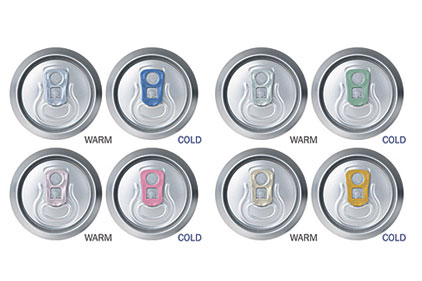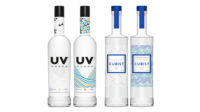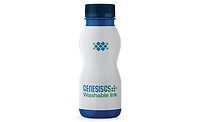Thermochromic, photochromic inks aid in shelf differentiation
Beverage brands should aim for 'theater in the hand' packaging experience

For many people, getting “inked” is a way to express their individuality. Although not quite the same as tattoos, inks and coatings in the beverage industry can be
|
an important element to help brand owners set their products apart on the store shelf.
“The single greatest impact inks and coatings can have is on shelf product differentiation,” says Chad Skelton, director of technology for Hartness International, Greenville, S.C. “The proliferation of microbreweries and distilleries require marketing and product managers to identify new ways to attract the consumer. Development of an iconic label [that] is easily recognizable on a crowded shelf is paramount to brand success.”
Patrick Edson, chief marketing officer for Chromatic Technologies Inc. (CTI), Colorado Springs, Colo., notes that when it comes to beverage packaging, it also is about the experience.
“The holy grail for brands is using packaging to create a theater-in-the-hand experience that dramatizes a brand benefit or brand positioning,” he says. “Chemistry that alerts, protects and surprises on the package is where brands are focused. Inks and coatings are the vehicle that delivers that chemistry.”
Whether it’s an experience or product differen-tiation, brand owners can employ a number of different practices through inks and coatings,
experts note.
“As shopping trips decline, our customers are increasingly using specialty inks and coatings to catch the eyes of the consumers as they walk the aisles of stores,” says Jared Brody, marketing and innovation manager with Ball Corp., Broomfield, Colo. “Our customers are using everything from brighter colors and variable graphics to matte coatings to differentiate their brands in a very competitive marketplace.”
Brody adds that the most successful utilization of a package occurs when that package is designed with inks and coatings from the start. In order to support this concept, Ball Corp. offers its Eyeris high-definition printing to deliver near-photo-quality images. In addition to Eyeris, the company offers Dynamark technology, which allows customers to utilize 12 different graphics on the package as well as thermochromic inks, which change color based on temperature.
Within the past few years, thermo-chromic inks have garnered a lot of attention within the beverage space.
“There has been an explosion of innovations around ink that reacts to different temperatures, complemented by a broad range of colors,” CTI’s Edson says. “High Velocity Ink (HVI) is a new generation of thermochromic ink that improves high-speed performance, transfer and color optimization and generates less waste. Other new, exciting areas are sunlight-activated ideas. Any brand that seeks to own the outdoor usage occasion will push hard in this area.”
Edson notes that CTI’s photochromic inks, or sunlight-activated inks, have fast kinetics, broad color options and durability. Reveal inks also can allow a brand to share messages or promotion codes to consumers during consumption, he adds.
When it comes to the different types of inks, Hartness’ Skelton says ultraviolet (UV) ink technology has helped further this proliferation of specialty inks. “Metallic (silver and gold) and thermochromic (temperature-sensitive) inks are extremely popular for beverage containers,” he says. “There are numerous special effects that can be produced using UV-ink technology. Photochromic, color-shift, pearlescent, soft-touch and textured inks are all possible using direct-print UV-ink technology. These unique specialty inks offer yet another form of product differentiation, which is critical in capturing consumers.”
As beverage-makers explore which inks they want to work with, they also are tasked with ensuring that the inks complement the container style and type, experts note.
“For glass bottles direct printed with UV silkscreen inks, flame pre-treatment is generally required to remove lubricity coatings that would prevent adhesion,” Skelton says. “Inks are formulated to an optimal viscosity range to allow consistent flow out and leveling after application to the glass. Proper temperature control of the inks and glass substrate is critical to maintain the optimal viscosity range.”
When it comes to aluminum packaging, Ball Corp.’s Brody notes that the company’s experience with the primary packaging material helped it develop its ink portfolio.
“Ball has been making cans for decades and continues to work toward innovative inks and coatings as well as applications,” he says. “Over that time, Ball has developed processes with the goal of ensuring we deliver the highest quality can or aluminum bottle possible to our customers. From producing approved standards [for] our pilot line ink, to our Graphics Center of Excellence (GCOE), to creating and following the highest industry printing standards, Ball focuses on creating packaging that exceeds our customers’ expectations.”
CTI’s Edson adds that as the beverage marketplace continues to grow, brand owners must consider all forms of packaging when selecting inks and other materials.
“As brands focus on a pipeline of ideas and building theater in the hand, they need help in stretching the ideas of chemistry and inks across all packaging formats,” he says. “The days of an idea only being presented on one packaging format are over. Brands need technology that works on all of their businesses. It’s counterintuitive, but if we want to sell more cans, we need to sell ideas and technology that will also grow cups, bottles and multi-packs.”
Another variable that beverage-makers should consider when selecting inks is their environmental impacts, Hartness’ Skelton explains.
“Hartness inks are [Proposition] 65 compliant as well as have a significantly lower carbon footprint compared to traditional inks used in the market today,” he says.
Looking for a reprint of this article?
From high-res PDFs to custom plaques, order your copy today!








